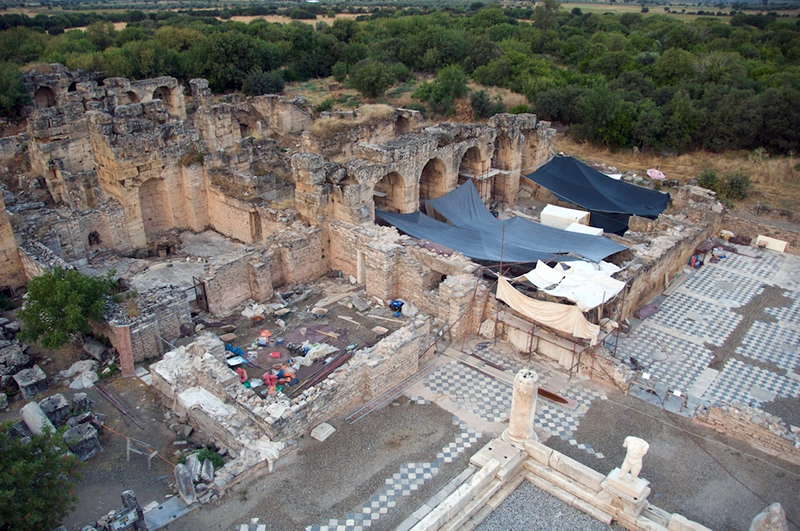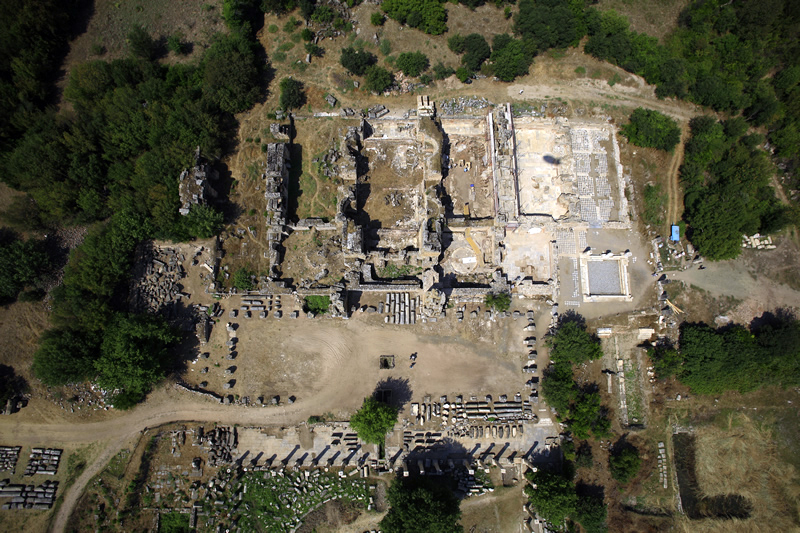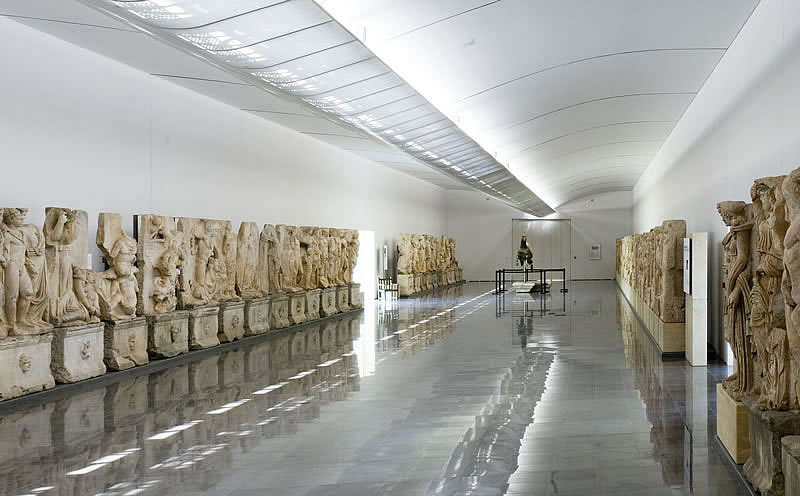Hadrianic Baths
The Hadrianic Baths were the largest public bath building at Aphrodisias. They were built in the early second century AD and dedicated to the emperor Hadrian (AD 117-38). The baths took up two full city blocks on the west side of the Urban Park, and connect directly with its west colonnade. They have two distinct parts: a series of barrel-vaulted bathing chambers and a great colonnaded forecourt with grand marble architecture. The vaulted chambers were built of massive limestone blocks covered with marble revetment; the floors and pools were lined with marble; and the hot rooms have floors raised on under-floor supports (hypocausts). The huge limestone walls have been standing since antiquity
The baths were an important centre of public life designed for cultured relaxation. They were carefully maintained throughout antiquity and were still functioning as baths in the sixth century when they continued to attract wealthy sponsorship for re-modelling and re-decoration. The architectural decoration of the forecourt is on a huge scale and of the highest quality, and a striking quantity of the best figured sculpture from the site was found here, both portrait statues and mythological groups, such as the Achilles and Penthesileia. The complex was both a bathing facility and a museum of marble statues.

Finds: Achilles and Penthesileia







